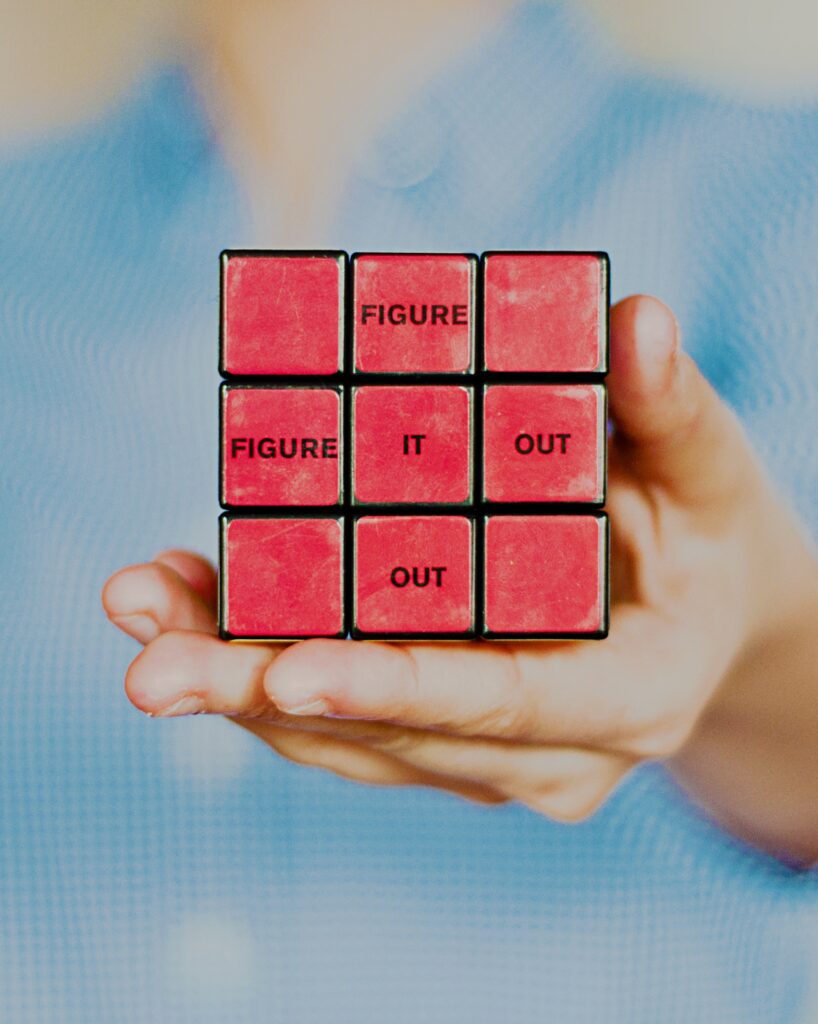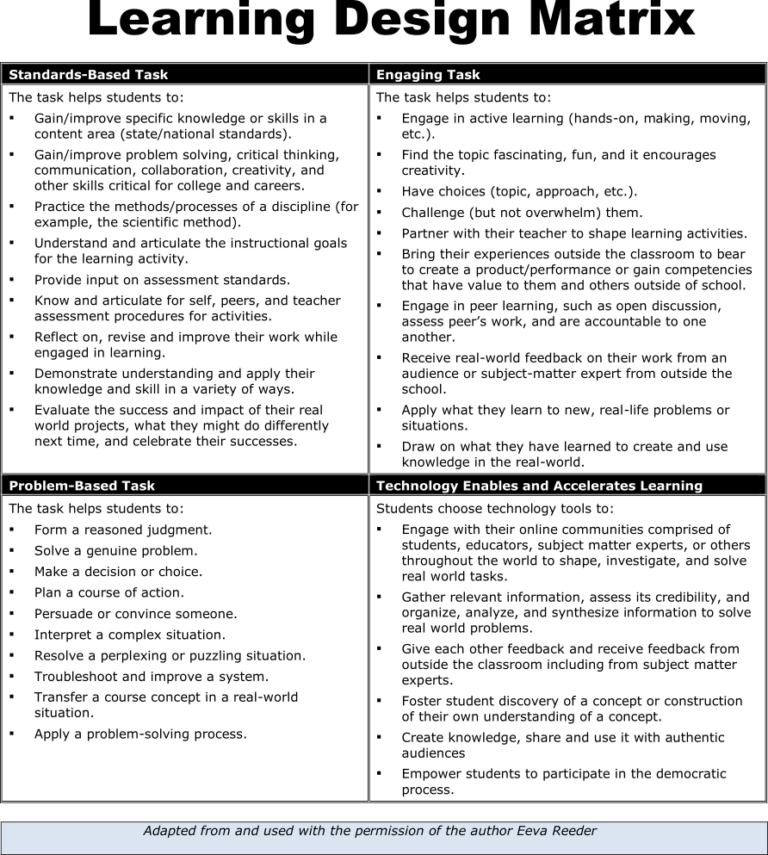
The ISTE Standards for Coaches 5c, “Evaluate the impact of professional learning and continually make improvements in order to meet the schoolwide vision for using technology for high-impact teaching and learning,” reminds us that the learning isn’t done when the professional learning session is over. Facilitators should seek to evaluate and be evaluated so as to continually make improvements as they seek to provide high-impact teaching and learning with respect to using technology.

Source: How to Approach Iterating Ed. Tech Professional Learning
Evidence: “How do we begin to evaluate professional learning? What are the most desirable aspects? When, how, and why do we utilize technology? What makes certain pedagogical approaches “high-impact” from both the teaching side of things as well as the learning end? How do we ensure that “student learning” remains first and foremost? In the end, it’s all about the students, right? These are all questions that run through my mind as I read ISTE’s Instructional Coaching Standard 5c. There is a lot going on in the language of this standard. If we assume that the schoolwide vision is discernable and agreed upon at the classroom level, which is a very big “if” and assumption, then we’re still left with a lot of questions to answer beyond that foundational aspect. There are no shortage of complex problems such as this in education, and complex problems are worth exploring. Perhaps a close look at the standard followed by a reframing of the standard’s language into a question will prove helpful in beginning to break down this complex myriad of ideas into individually addressable parts.”
Explanation: Being able to effectively evaluate the impact of professional learning begins with the willingness to ask a lot questions around that learning so that improvements can continuously be made schoolwide.

Source: How to Approach Iterating Ed. Tech Professional Learning
Evidence: “With all of this in mind we’ve arrived at the end with the end and essential question in mind: How does one iteratively design a professional learning experience on using technology for high-impact teaching and learning? By building on everything described so far, effective professional learning can be designed and provided. In order to iterate, professional learning results need to be actively researched and monitored. By pre-assessing participants in advance, formatively assessing professional learning while it’s taking place, and summatively assessing via follow-up surveys, professional learning experiences can be monitored and improved upon. Tracking and implementing adjustments made during facilitation are important and when combined with valuable participant feedback, powerful iterative improvements can be made which result in ever increasing effectiveness of the targeted professional learning. There’s a lot more to approaching active research with respect to improving professional learning but intentional assessment is the place to start. For learning more around identifying how best to procure the desired data for ongoing program evaluation, seek out research guides and resources such as “Small Scale Evaluation: Principles and Practice”, and you’ll soon be unlocking elements of your own professional learning along the way to helping and supporting others.”
Explanation: Formatively assessing participants before, during, and after trainings combined with careful tracking of adjustments and feedback allows professional learning facilitators to evaluate the impact of training and to continually make improvements in order to ultimately provide high-impact teaching and learning.

Source: PBL for the Teachers?
Evidence: “There’s a lot to PL so it’s probably still challenging to envision what PBL for adults look like, especially when time is at an extreme premium. Where to start and how to do it all? Well, maybe one doesn’t have to do everything all at once, how about a slice of professional learning PL PBL pizza? “Project slices—condensed project-based learning for teachers—give educators a student’s perspective on what it’s like to do a project.” (Miller, 2017). The idea is very much worth exploring. The key is starting somewhere so that the benefits can begin to be realized through the transformation of professional learning experiences for educators. In this way, active learning can be realized outside of the classroom as part of the teacher’s professional learning experience and then back in the classroom where the teacher can bring active learning to the students. When teachers are authentically engaged in their own learning then they can more effectively transfer that learning to their own teaching context,”Teachers quickly move from making generalizations about the experience and its implications to applying what they’ve learned to the teachers’ future classrooms, their integrated project-based teams, and their schools as a whole.” (Lenz, 2007). So, just maybe, the question should be less about where do we begin and more about when?”
Explanation: A significant aspect of evaluating professional learning is with respect to the level of engagement. Continual improvements can be made to better and more authentically engaged teachers in their professional learning experience, such as embedded applications and examples based on PBL. The more engaged participants are in their professional learning, the more likely that learning is to result in high-impact classroom teaching on a schoolwide level.

Source: Professional Learning Can Be ‘Squirrelly’ Business
Evidence: “As mentioned earlier, low-tech professional learning approaches can teach us a lot about professional learning focused on educational technology. One example that stands out in my mind given the original guiding questions, is a low-tech STEM training that was arguably the most successful professional learning that I led as an instructional coach. While there was definitely room for improvement, the experienced utilized a significant number of the professional learning recommendations already listed. The training itself was one that I was asked to recreate a number of times for different audiences, and the lessons that I learned from leading this training are ones that I applied later across a variety of technology-intensive trainings. Essentially, the training was an introduction to the engineering design process from Next Generation Science Standards utilizing a limited number of common items as the “technology” in a design challenge designed to work in tandem with a picture book called “Those Darn Squirrels”. There a lot of different ways to outline the details of the training. I think the most helpful might be using the five professional learning recommendations from “5 Things Teachers Want from PD, and How Coaching and Collaboration Can Deliver Them—If Implementation Improves” by Karen Johnson.”
Explanation: Sometimes, the most surprising source of professional learning is also the most effective. Making improvements to continually capitalize on lessons learned from every experience help to raise professional learning to the level of high-impact at a schoolwide level. Additionally, the majority of instructional pedagogy lessons learned apply equally well in both low and high tech contexts.

Source: Coaching the Coaches
Evidence: “The lesson reflection process centered around the Learning Design Matrix referenced and featured in Dr. Foltos’s peer coaching book. The matrix serves as the feature image of this blog post, and, as you can see, the focus of the four quadrants is on standards-based tasks, engaging tasks, problem-based tasks, and technology enables and accelerates learning. Fortunate enough to have established a positive rapport, my peer coaching partner and I were able to review the lesson of focus through the lens of all four quadrants from the Learning Design Matrix. Through the standards-based lens, we were able to look more closely at the learning targets. While the selected standards seemed well aligned, we were able to brainstorm ways to make them more explicit for learners. Engaging tasks take on a new dimension when learning online, so we looked at ways to build more interaction among participants. By keeping breakout group members consistent, we discussed how this would likely lead to more relational engagement by participants which would help increase task engagement. The lesson contained several problem-based tasks. What seemed missing, though, were ways to empower participants to better support each other so we brainstormed ongoing discussion board ideas. Lastly, we looked at technology–something that’s pervasive throughout online learning but can also become a distraction or impediment to application as a result. With this in mind, we looked at how technology could better support interaction and looked at learning tools that better support the human element of learning. The overarching coaching and reflection discussion had both breadth and depth as we explored numerous applications across the entire Learning Design Matrix for iterating upon the existing lesson design for future instructional improvements and implementation.”
Explanation: Modeling, through description, the process of evaluating professional learning impact helps other educators to emulate this approach with respect to their professional learning design as we all seek to make continual improvements. Sharing conversations around the utilization of technology helps to show how this can be applied to meet a schoolwide vision for high-impact teaching and learning.

